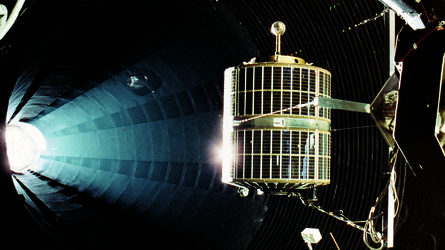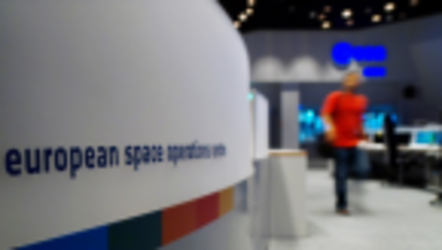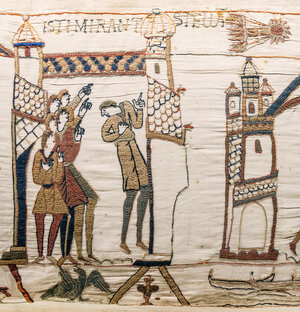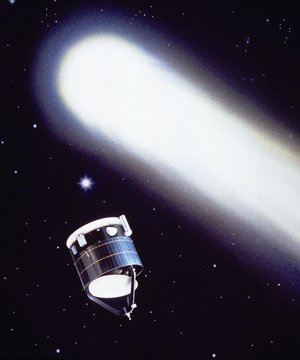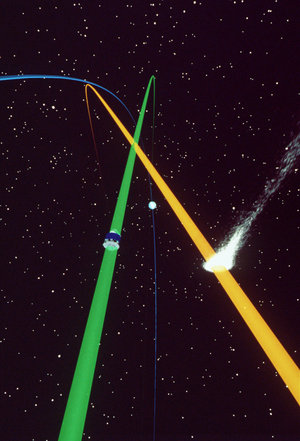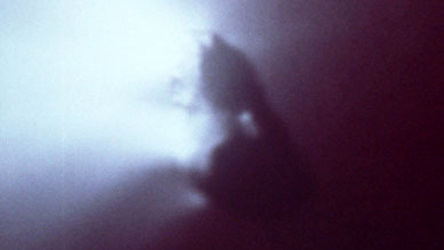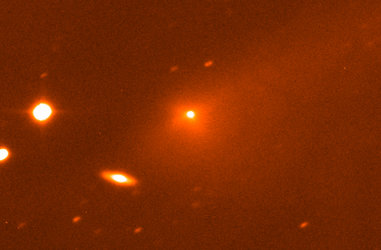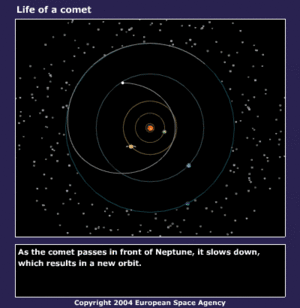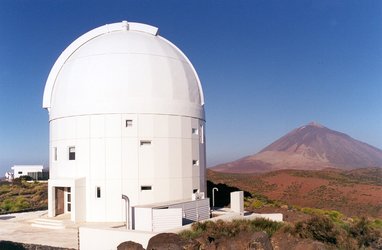Giotto, ESA's first deep-space mission: 25 years ago
In 1986, ESA's Giotto passed closest to the nucleus of Comet Halley and revealed the first evidence of organic material in a comet. Much of what we know about comets comes from the pioneering Giotto mission.
Twenty-five years ago, during the night of 13-14 March 1986, the Giotto spacecraft swept within 600 km of Comet Halley, obtaining the first ever close-up images of a comet nucleus. The image sequence taken by the Halley Multicolour Camera revealed a black, potato-shaped object, partially illuminated on the warmer, sunlit side with bright jets spewing gas and dust into space.
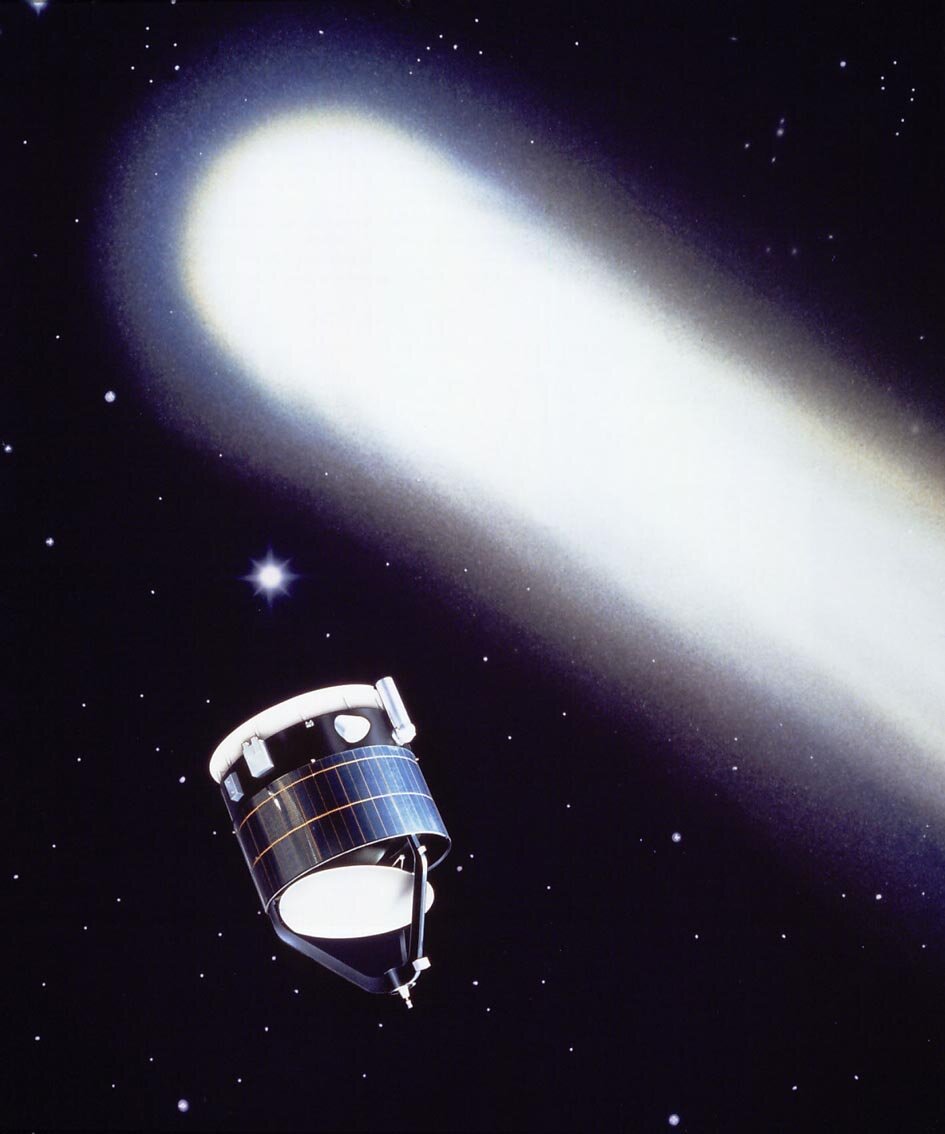
Giotto had a number of other very impressive ‘firsts’ and achievements to its credit. It was the first deep-space mission to change orbit by returning to Earth for a gravity-assist manoeuvre. It was also the first spacecraft to encounter two comets and in doing so measured the size, composition, and velocity of dust particles and measured the composition of those two comets.
Giotto made the closest comet flyby to date by any spacecraft (about 200 km from Comet 26P/Grigg-Skjellerup) and studied the interaction between the solar wind, the interplanetary magnetic field and the comet itself. Comet 1P/Halley was the logical choice for a cometary encounter mission. Aside from its fame with the public, Halley is a young, highly active comet and, with 30 recorded appearances, its nature and orbit are perhaps the best understood of any comet.

Launched from Europe’s Spaceport in French Guiana in July 1985, Giotto was one of a small armada of spacecraft sent to rendezvous with Halley – two Soviet, two Japanese and one from NASA. An agreement was set up between the various agencies and information passed (especially from the Soviet Vega 1 and 2 missions) on to the Giotto team, which was the last to fly by the comet, to help the final targeting of the spacecraft.
By spacecraft standards, Giotto was small, weighing around 960 kg (reduced to 550 kg after its solid motor had burnt out and the various orbit correction manoeuvres had been made) and about 2 m wide by 1 m in height plus the antenna on top. Its design was based on the GEOS Earth-orbiting research satellites.
The most difficult problem to overcome was how to ensure that Giotto survived long enough to take pictures of the nucleus when the spacecraft and the comet were heading towards each other at a combined speed of 245 000 km/h (equivalent to crossing the Atlantic Ocean in 11 minutes!). At this speed, a 0.1 g dust particle would be able to penetrate 8 cm of solid aluminium. Since it was out of the question to equip Giotto with a 600 kg aluminium shield, engineers turned to a more subtle design first proposed by American astronomer Fred Whipple back in 1947.
The spacecraft's dust shield consisted of two protective sheets, 23 cm apart. At the front was a sheet of aluminium (1 mm thick), which would vapourise all but the largest of the incoming dust particles. A 12 mm thick sheet of Kevlar at the rear would absorb any debris that pierced the front barrier. Together they could withstand impacts from particles up to 1 g in mass and travelling 50 times faster than a bullet.

After completing its mission to rendezvous with and observe the comet, Giotto went into hibernation for four years to be woken up in summer 1990 and to go to sleep again until early 1992] . Although a few of the instruments were damaged during the encounter, the spacecraft had survived the battering by cometary dust and a second cometary flyby, this time of Comet 26P/Grigg-Skjellerup, took place in July 1992.
The success of Giotto inspired a succession of cometary encounter missions including ESA's Rosetta mission. ESA’s Rosetta is due to encounter Comet 67P/Churyumov-Gerasimenko in 2014.



